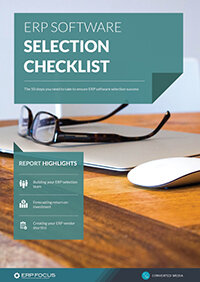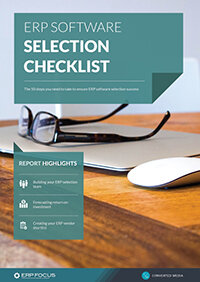5 common mistakes made during ERP replacement
In most cases, “replacing” any existing ERP system requires double the effort and cost necessary to implement an ERP for the first time. There are a host of reasons behind this assertion, but it is typically driven by two overarching management constraints involving the mutual banes of any commercial enterprise; limited time and money.
ERP systems tend to become culturally intrinsic to “how companies think” about business challenges over time. In turn, these intellectual and emotional dependencies tend to guide administrative decision-making associated with “what” money is spent when; and more importantly, “why” senior managers authorize re-investment costs if called for.
In most cases, “replacing” any existing ERP system requires double the effort and cost necessary to implement an ERP for the first time.
When dealing with the potential of ERP replacement an immediate “I don’t have time to deal with any system changes” argument usually emerges first. And this is followed by a consideration on the order of “…and I sure don’t want to spend any more money on what I already own” conclusion.
However, companies do find themselves having to accept that ERP replacement is necessary from time to time. The real kicker in this situation is that even if management is “forced” to make a move, they are unlikely to “appreciate” the experience culturally, and this administrative irritation is potentially exacerbated by any expanded cost burdens.
1. “New and improved” often isn’t
During the last two decades ERP systems have evolved from client/server/LAN topologies, to today’s globally transparent cloud-based variants. However, as a matter of essential processes, aside from next-gen tenets primarily driven by the advent of expanded mobility, ERP systems offer the same central operational values today that they offered twenty years ago.
Recommended reading: 50-step ERP software selection checklist
Enterprise managers who feel pressured to replace a current platform make the mistake of focusing on new systems that offer highly touted options that look like state of the art features, but often utilize legacy processes and exhibit legacy limitations. Consequently, if you find yourself facing ERP replacement don’t waste your research time until you investigate “where” the new system evolved from first.
2. If it’s broken, don’t fix it
In the same way that the “new and improved” conundrum exists, managers often see a problem that really isn’t a problem at all. For example, if your facing a requirement to replace a current ERP system due to an alleged irregularity that cries out for change, perhaps it would be better to take a deep breath first; then investigate the issue in detail, rather than looking for a more complex and costly solution. Unless the system is completely unusable, given the plethora of today’s system configuration options , there is often a simpler way to achieve a fix in the short-term.
3. RFI insanity: doing the wrong research (again)
As Einstein opined; “Insanity is doing the same things over and over again and expecting different results.” In the case of an ERP replacement, therefore, if an RFI is called for when working toward a systems change, it is important to remember that using previous baseline RFI queries to save time, will do nothing but recreate decision points similar to the first failed solution. Consequently, use a clean-sheet, a sharp pencil, and start by re-setting your assumptions.
4. Brand loyalty and the cost of being lazy
Many ERP replacement managers immediately pick up the phone and call a previous vendor partner believing that the solution will offer a simpler way around the change challenge. Unfortunately, the chances are that if the manager didn’t like the way the previous system worked out, any updated system will offer the same advantages and limitations.
Comprehensive resources-based platforms typically evolve on the basis of iterative, rather than clean-sheet processes, so don’t be lazy about it. If you require a change; change.
5. Decision freeze
This mistake is nearly the most primal of all errors; the inability to make a decision when part of a group. This situation typically occurs when an enterprise management cadre enters what I refer to as a “circular free fire zone”. In the event, everyone wants to voice an opinion, no one wants to work hard enough to create consensus, but there’s no one with the juice to make a final determination stick.
I have seen this characteristic showcased in nearly every corner of the world, and the evolution always ends badly for a company. As a result, if ERP replacement is called for, one individual needs to be responsible, compile and comprehend the requisite information, then pull the trigger; whether it is the CEO, COO, CIO, CFO, or even an IT Director.
Free white paper

60-Step ERP Selection Checklist
Get the comprehensive checklist for your ERP selection project

Related articles
-

A beginner’s guide to ERP integration
What is ERP integration, why it matters, and more!
-

CMMC Compliance: What Aerospace and Defense Manufacturers Need to Know
Key insights on CMMC compliance, deadlines, and securing DoD contracts with CMMC 2.0 certificatio...
-

When is it time to replace a legacy ERP system?
Replacing your legacy ERP system with new software can revitalize your business operations.

